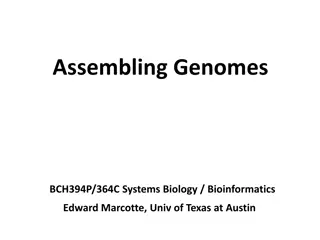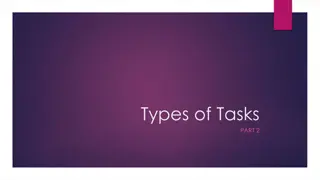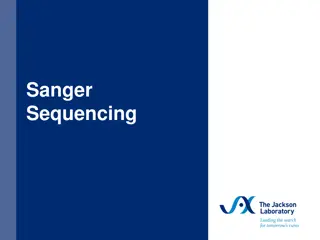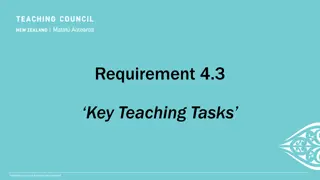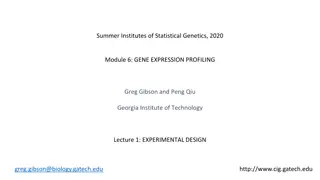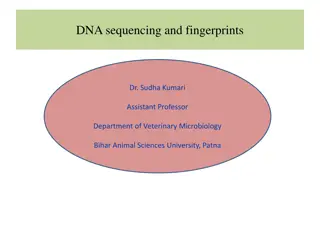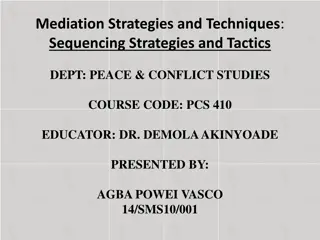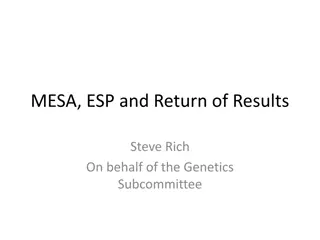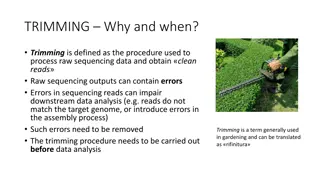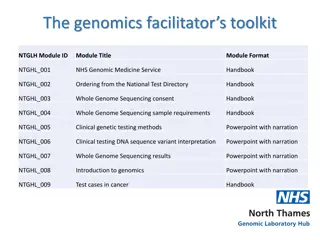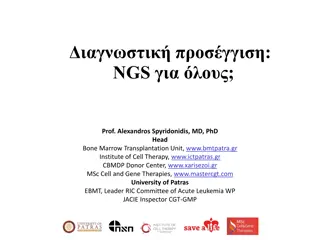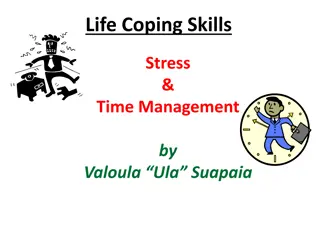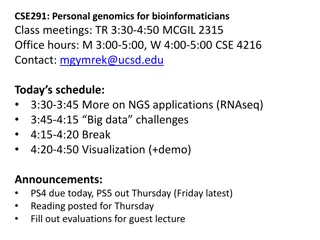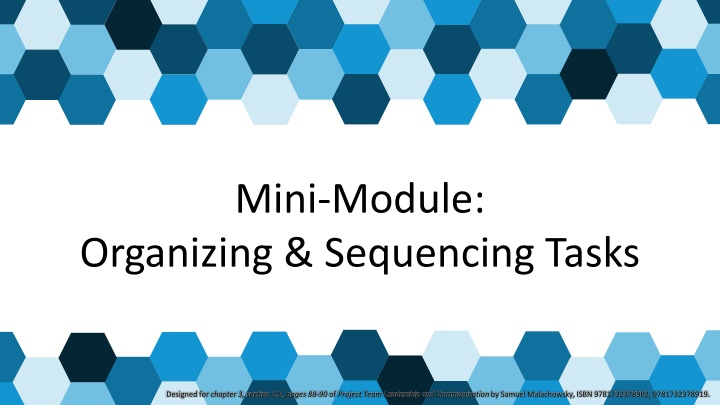
Organizing and Sequencing Tasks for Effective Project Management
Learn about organizing tasks with the Work Breakdown Structure, optimizing task division with the One-to-Two Rule, and sequencing tasks for efficient project scheduling. Explore how to create a precedence diagram to manage activities effectively. Dive into practical scenarios to enhance your understanding.
Download Presentation

Please find below an Image/Link to download the presentation.
The content on the website is provided AS IS for your information and personal use only. It may not be sold, licensed, or shared on other websites without obtaining consent from the author. If you encounter any issues during the download, it is possible that the publisher has removed the file from their server.
You are allowed to download the files provided on this website for personal or commercial use, subject to the condition that they are used lawfully. All files are the property of their respective owners.
The content on the website is provided AS IS for your information and personal use only. It may not be sold, licensed, or shared on other websites without obtaining consent from the author.
E N D
Presentation Transcript
Mini-Module: Organizing & Sequencing Tasks Designed for chapter 3, section 3.5, pages 88-90 of Project Team Leadership and Communication by Samuel Malachowsky, ISBN 9781732378902, 9781732378919.
Organizing Tasks: The Work Breakdown Structure Organizes elements with sub- numbers. 1.2.3 is part of 1.2 Two types: product & process Product divides by components Process divides by activities/tasks Can be built top down, bottom-up, or rolling-wave A good way to organize brain- storming efforts early in the project Sequencing of tasks or components isn t needed until later in scheduling efforts Diagrams: Malachowsky, Samuel. Project Team Leadership and Communication. Lintwood Press. 2018. p. 88. Project Management Institute. A Guide to the Project Management Body of Knowledge Fifth Edition. Project Management Institute Inc. p. 125-132. 2013.
The One-to-Two Rule How do you know when you ve divided tasks into small enough chunks ? If tasks are too large, it becomes difficult to track progress If tasks are too small, time is wasted micromanaging the project Optimize with The One-to-Two Rule, which states that tasks have been divided enough when each requires 1-2 resources 1-2 weeks to complete it Diagram: Malachowsky, Samuel. Project Team Leadership and Communication. Lintwood Press. 2018.
Sequencing and Scheduling Tasks Predecessors or dependencies are determined for all tasks Using this information, a precedence diagram is created The longest path, called the critical path, determines project length Slack time, the ability to delay starting without impacting the schedule, is available to some tasks which are not on the critical path Tasks are then calandarized, with actual dates based on resources available Diagrams: Malachowsky, Samuel. Project Team Leadership and Communication. Lintwood Press. 2018. p. 89, 90.
Activity Organizing and Sequencing Tasks Consider the following scenario: One of your best friends is graduating from college and you ve decided to throw her a big party. Her parents have volunteered to let you decorate and hold the event at their house, the food is to be catered, and you would like to invite as many of her friends and family as you can. 1. Create a basic work breakdown structure, listing 15 planning activities that must take place 2. After determining which activities must occur before others, create a precedence diagram with the activities and tasks outlined in your work breakdown structure


